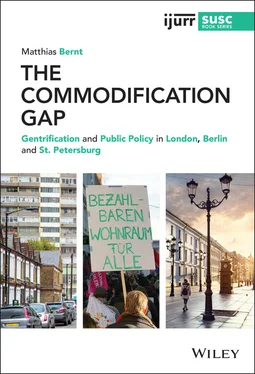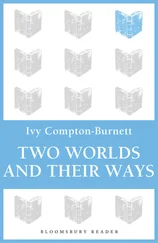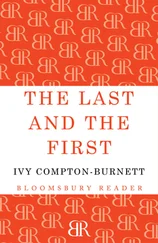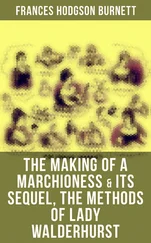Matthias Bernt - The Commodification Gap
Здесь есть возможность читать онлайн «Matthias Bernt - The Commodification Gap» — ознакомительный отрывок электронной книги совершенно бесплатно, а после прочтения отрывка купить полную версию. В некоторых случаях можно слушать аудио, скачать через торрент в формате fb2 и присутствует краткое содержание. Жанр: unrecognised, на английском языке. Описание произведения, (предисловие) а так же отзывы посетителей доступны на портале библиотеки ЛибКат.
- Название:The Commodification Gap
- Автор:
- Жанр:
- Год:неизвестен
- ISBN:нет данных
- Рейтинг книги:5 / 5. Голосов: 1
-
Избранное:Добавить в избранное
- Отзывы:
-
Ваша оценка:
- 100
- 1
- 2
- 3
- 4
- 5
The Commodification Gap: краткое содержание, описание и аннотация
Предлагаем к чтению аннотацию, описание, краткое содержание или предисловие (зависит от того, что написал сам автор книги «The Commodification Gap»). Если вы не нашли необходимую информацию о книге — напишите в комментариях, мы постараемся отыскать её.
—Jennifer Robinson, Professor of Human Geography, University College London, UK
—Manuel B. Aalbers, Division of Geography & Tourism, KU Leuven, Belgium The Commodity Gap
The Commodification Gap
The Commodification Gap
The Commodification Gap — читать онлайн ознакомительный отрывок
Ниже представлен текст книги, разбитый по страницам. Система сохранения места последней прочитанной страницы, позволяет с удобством читать онлайн бесплатно книгу «The Commodification Gap», без необходимости каждый раз заново искать на чём Вы остановились. Поставьте закладку, и сможете в любой момент перейти на страницу, на которой закончили чтение.
Интервал:
Закладка:
But what then is the ontological status of gentrification? What is the relationship of empirically observable phenomena to the concept? Different ontological positions allow different answers. Thus, from a positivist point of view, a bundle of empirical phenomena could be labelled gentrification as long as the term accurately describes patterns of similarity and regularity with which phenomenon A (say the renovation of dilapidated houses) is followed by phenomenon B (say a decline in the number of poor households). From a hermeneutic standpoint, the term gentrification would make sense only in so far as it was able to reveal the meanings that are attributed to the actual actions underpinning the process. Calling something gentrification would, thus, be adequate when the term could be found in actual discourses and used by actual actors, e.g. to demarcate social demands discursively. A realist understanding of the question would look rather different and, under this view, putting together phenomenon A (a renovation of dilapidated houses) and B (displacement of poor households) under a concept X (like gentrification) would only be justified if one was able to establish a causal relation between the two. The major consequence of a realist approach to gentrification is that conceptualisation, not research methods, is put at the centre.
Yet, how then can causality be built and examined? At the most fundamental level, each concept or theory is an abstraction. It must abstract from the particular conditions of a specific case and select those constituents of the case that have a significant effect that might also be found in other cases. In other words, the multiple elements of a concrete object must be isolated from each other, examined one by one and then recombined to form concepts that reflect the concreteness of their objects. The difficult point about abstractions is that they require the separating out of the kind of relationship that a particular element has to the concrete totality of which it is a part. In this respect, it is crucial to distinguish between external or contingent relations and internal or necessary relations (Sayer 1992, pp. 89–90). External or contingent relations can be found when two objects can exist without each other. Sayer (ibid.) uses the example of a person and a piece of the earth for this; though their interference can have significant effects, each of the two can exist without the other. By contrast, the relationship between a master and a slave or a tenant and a landlord is internal: both entities form a social relation that ceases to exist without both elements being part of it. Third, it is possible to identify asymmetrical internal relations. These appear when ‘one object in a relation can exist without the other, but not vice versa’ (Sayer 1992, p. 90). Sayer provides the example of the state and council housing; states can exist without council housing, but no council housing can exist without a state.
Clarifying the type of relationships that link the different elements of an object to each other is the first step towards conceptualising, as it forces the researcher to explain what it is about an element that makes it a necessary part of a relationship. With regard to gentrification, the questions would thus be: What is it about phenomenon A (renovations of dilapidated houses) that enables it to cause phenomenon B (displacement of poor households)? Why and how are renovations done and how does this relate to the likelihood of poor households being displaced? Is there a phenomenon C (say an immigration of middle‐class households) that necessarily goes together with phenomenon A to achieve phenomenon B?
In this sense, causation is the identification of the actual mechanisms producing the event (as different from identifying patterns of regularity). This, however, leads to new problems as the ‘open systems’ character of the social world leads to situations in which the same causal power can produce different outcomes in different contexts, or different causal mechanisms can work at the same time. As multiple causation is fundamental to social phenomena, it follows that a particular event (e.g. the displacement of low‐income households) can involve several causal mechanisms that may or may not internally be related to each other. Depending on the conditions, the same mechanism can produce different results, or different mechanisms can lead to the same outcome. If one was to relate this approach to the example of gentrification, the research design would become even more complex: not only would a causal relation between A (renovations of dilapidated houses) and B (displacement of poor households) need to be established and the impact of the intervening variable C (immigration of middle‐class households) be explained, but research would need to expand to other contexts in which the impact of C (immigration of middle‐class households) would possibly be neutralised by variable D (say strong welfare support) or intensified by E (say ethnic discrimination). From this, theorising would move backwards and re‐examine the causal relationship between renovation activities and displacement established at an earlier stage of research and reformulate the theory on this basis.
The realist approach towards theory building is, thus, built upon empirical observation and abstraction. It starts with a theory, but moves on to empirical data capable of inducing an alternative conceptualisation, and then moves back to revising the original theory, thus producing a need for new empirical observation and so on and so forth. The actual processing of research is, therefore, highly iterative. It implies a back and forth between inductive and deductive cycles of data collection and explanation in which deduction helps to identify the object of interest and suggests explanations about the mechanisms at play, whereas induction provides data that is to be explained and tested. Both the use of data as an illustration of theoretical arguments and the use of empirical data to falsify a theory without giving any specificities that would allow for alternative conceptualisations are seen as preliminary stages in the development of new knowledge that need to be overcome by the development of new theories.
Design of this Study
How can these ideas inform a comparative study on gentrification? Without further ado, I draw four basic orientations from the preceding discussion.
First, I conceptualise gentrification not as an object, but as an abstraction. Advancing its study is hardly possible on the basis of a holistic approach that tries to integrate a broad variety of empirically observable phenomena all at once and indiscriminately apply the whole range of available, and to some part contradictory, explanations for gentrification. Learning from realist approaches, it is necessary to disaggregate the various explanations and start with one established theory whose validity can be examined in different contexts. Only when this is done, does it become possible to carefully examine the limits of this theory of gentrification and to study how other factors impact on the causal relationship between different phenomena. Meaningfully studying gentrification, thus, demands a clear point of reference towards an existing theory, as well as a focus on the phenomena to be observed.
Second, there is a close relationship between studying how an established concept works in different contexts and theoretical advancement. The task of an empirical study is, thereby, not to verify or falsify an established theory, but to work out alternative causations. In this context, it becomes crucial to empirically distinguish between necessary and contingent relations. Do different structures (say welfare states) influence a mechanism in a way that changes the causal relationship between two phenomena (say renovations and displacement)? Do contextual factors lead to differences in kind or in degree? Can the same outcomes (e.g. displacement) be explained by different mechanisms in different environments?
Читать дальшеИнтервал:
Закладка:
Похожие книги на «The Commodification Gap»
Представляем Вашему вниманию похожие книги на «The Commodification Gap» списком для выбора. Мы отобрали схожую по названию и смыслу литературу в надежде предоставить читателям больше вариантов отыскать новые, интересные, ещё непрочитанные произведения.
Обсуждение, отзывы о книге «The Commodification Gap» и просто собственные мнения читателей. Оставьте ваши комментарии, напишите, что Вы думаете о произведении, его смысле или главных героях. Укажите что конкретно понравилось, а что нет, и почему Вы так считаете.












